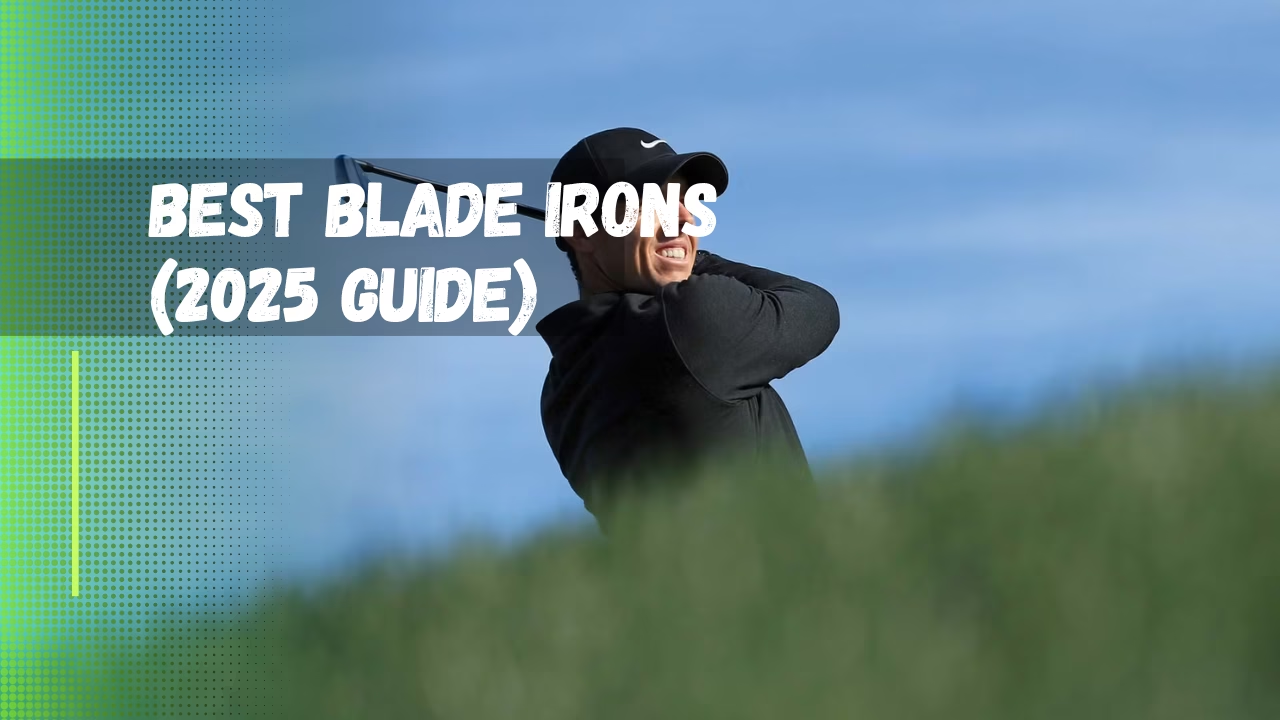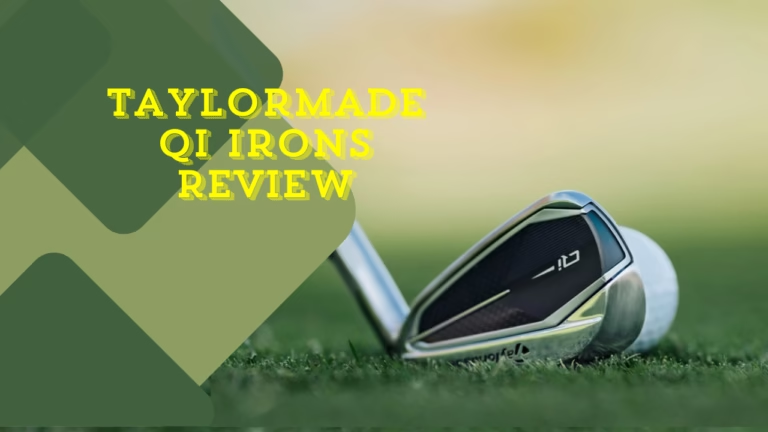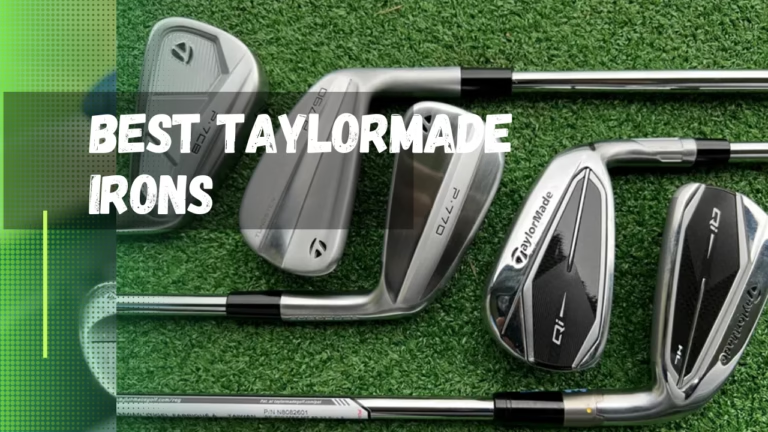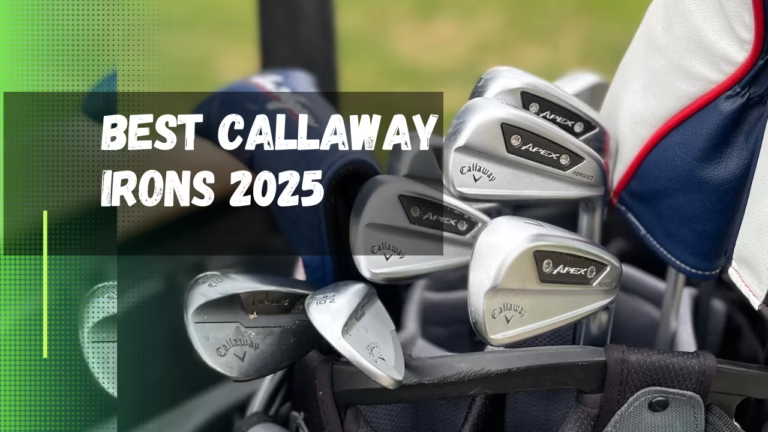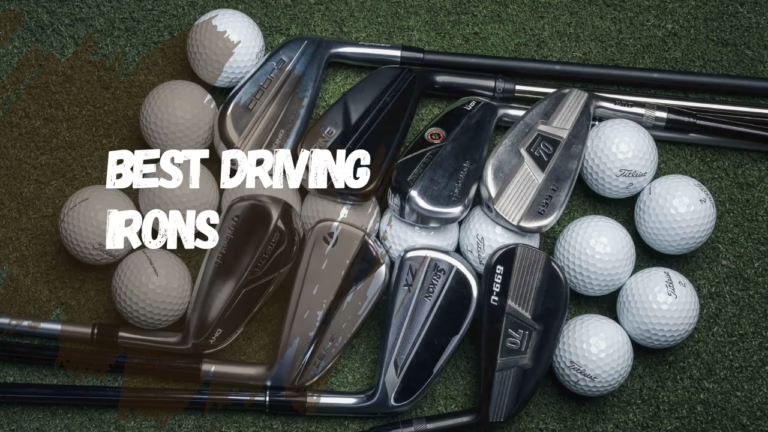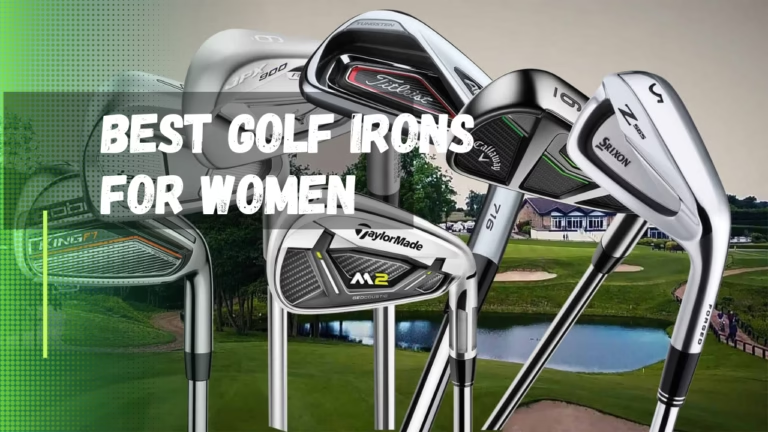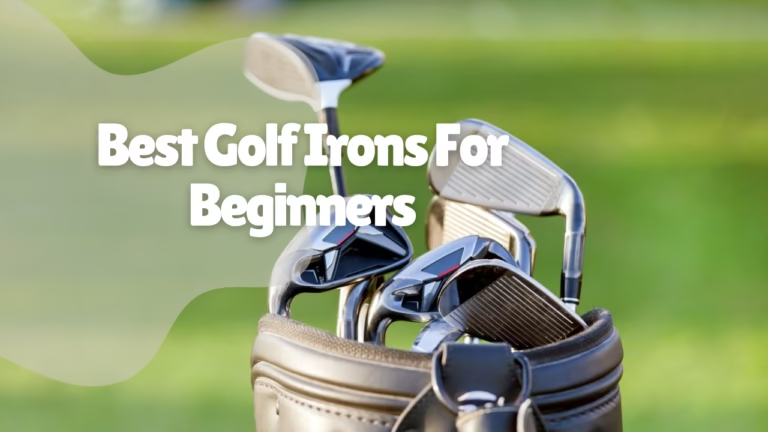Best Blade Irons (2025 Guide)
Best blade irons have long been the go-to choice for elite and top-tier golfers. But lately, they’ve lost some shine — even on tour. More and more top players are moving away from traditional blades and turning to players’ irons that offer more forgiveness.
So, what makes a blade iron special? Well, they’re typically forged from a single piece of metal. They’ve got smaller heads, thinner top lines, and narrower soles, giving them that sleek, razor-sharp look. This starkly contrasts the chunkier, cavity-back irons made for higher-handicap golfers designed to boost forgiveness and launch.
Blades also tend to have lower lofts — think 34° or even 35° for a 7-iron — which means they demand fast swing speeds and precision. In other words, they’re not the most forgiving clubs out there.
But here’s the thing — for players with the skill, blades offer unmatched feel, control, and shot-shaping ability. That’s why many of the best ball strikers still love them. Blades let you shape shots both ways, dial in spin, and control your distances more accurately. The payoff? More pin-hunting opportunities and lower scores.
Curious about which blades stood out in 2025? We tested all the top models on a launch monitor to determine which ones truly shine. Ready to dive into the data? Check out the table below — or scroll down for our expert-reviewed shortlist.
Our Top Best Blade Irons (Updated for 2025)
Our list is of the best golf irons below, and prices are for a complete set (unless noted)…
- Ping Blueprint T Iron
- TaylorMade P7MB 2023 Irons
- PXG 0317 ST Iron
- Titleist 620 MB Irons
- Wilson Staff Model Blade Iron
- Takomo 301 MB Golf Irons
- Mizuno Pro 241 Iron
- Callaway 2024 Apex MB Iron
- Vega Mizar Pro Iron
Reviews Of Our Best Blade Irons 2025 & Best Golf Irons Blades
1. Ping Blueprint T Iron: Better Player Iron Sets
The Quickest, Longest Blade We’ve Tested This Year
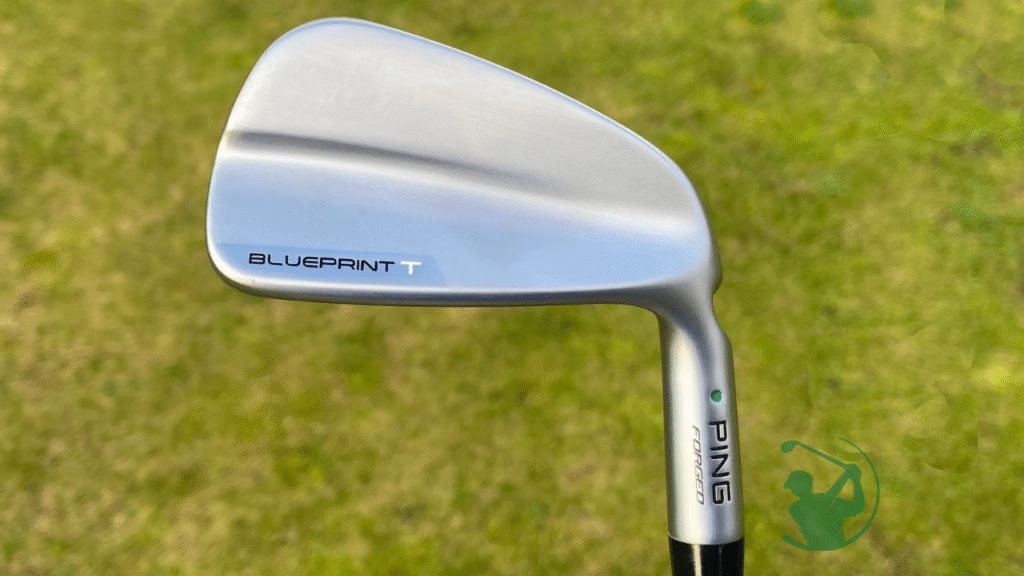
It always surprises me when golfers say they want to play the same irons as the pros — but then complain that those clubs are too narrow, sharp-looking, or just “too much.” Take the original Blueprint, for example. People griped about its thin topline, narrow sole, and overall intimidating vibe. But here’s the thing: if you’re going to copy tour players’ gear, you’ve got to embrace the quirks that come with it. That’s what the best in the world want.
The new Blueprint T is cut from the same cloth. Like the original, it has an incredibly sleek head shape that looks right behind the ball. Honestly, I wish I had the game to play it myself.
Now, let’s talk feel. Ping hasn’t always been known for its forged irons, but the company spent years claiming cast irons could feel just as good. So it’s a big deal that they now offer three irons with forged components: the Blueprint T, Blueprint S, and i525. That’s a noticeable shift in philosophy and a quiet but clear nod to changing times.
I love that Ping isn’t making a huge fuss about it. You don’t hear them shouting “forged!” from the rooftops like Mizuno or other traditionalists. But after testing, I can honestly say the Blueprint T holds its own next to the Mizuno Pro 241—and that says a lot. Sometimes, the “forged feel” hype feels more like marketing than real performance.
While Mizuno has earned its reputation in the forged iron space, Ping has extensive iron expertise. Based on our numbers, I’d confidently recommend the Blueprint T to anyone exploring new muscle-back blades in 2024.
Our test pro even called it the longest and quickest blade we’ve seen this year. While there are a few other models I’d personally choose for slightly more forgiveness, the Blueprint T delivers elite performance without making you overthink, feel feedback, or fitting myths.
Pros
- Stunning design and elegant head shape
- Minimal offset — great for skilled players
- More refined look compared to the original Blueprint
Cons
- The visible toe screw and notched hosel may not appeal to everyone.
2. TaylorMade P7MB 2023 Irons: High-Performance Golf Blades
Significant Turf Interaction and Seriously Good Looks
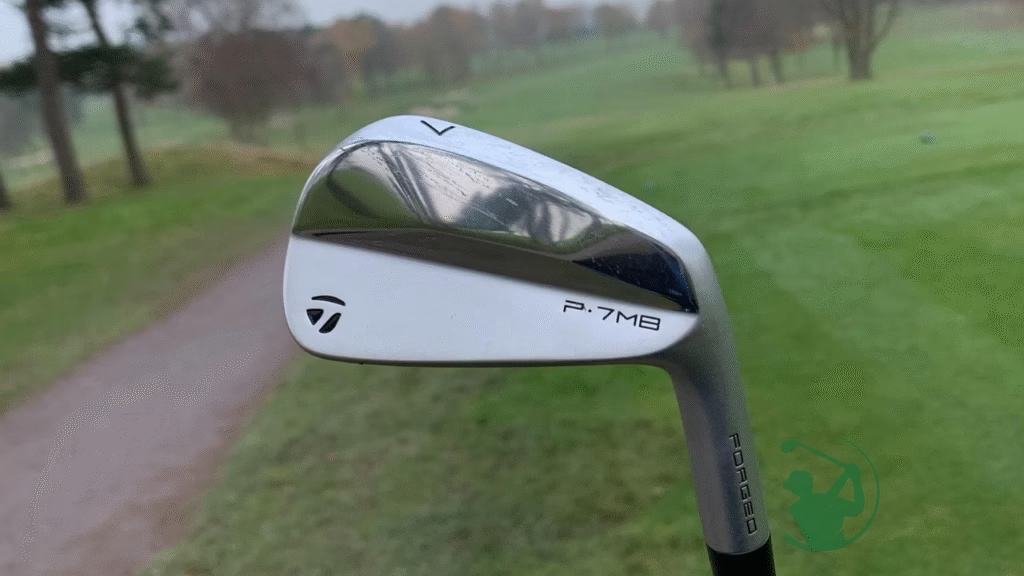
Building on the success of the 2020 P7MB irons, TaylorMade has stepped things up with this updated version — and it’s a real treat for better players. These irons are forged in five stages using a 2,000-ton press, giving them that solid, muscular shape and a thicker back edge. They’re slightly more compact than the original model, but TaylorMade added a bit more bounce, meaning these 2023 blades glide through the turf beautifully.
Spin? Oh yeah, they’ve got plenty. These irons launch with serious zip, thanks to TaylorMade’s most aggressive MX9 score lines on the face. That gives you much control over ball flight — keep it low under the wind or float one high into the green.
Feel-wise, they’re smooth and responsive — just what you’d want from an actual blade. Even the 4-iron didn’t feel too intimidating to swing, a rare compliment for a muscle backset.
Bottom line? There’s a lot to love here. With clean, squared-off heads and classic good looks, these irons will be a hit with blade lovers. If you’re a fan of traditional players’ clubs, this is one of TaylorMade’s best offerings in recent years.
Pros
- Refined sole grind — slices through turf with ease
- Sleek, premium look and feel
- Great spin control with aggressive score lines
Cons
- Not very forgiving — but hey, they’re blades, after all.
3. PXG 0317 ST Iron: Workability and Spin Control
Arguably the Best Muscleback Steel Out There
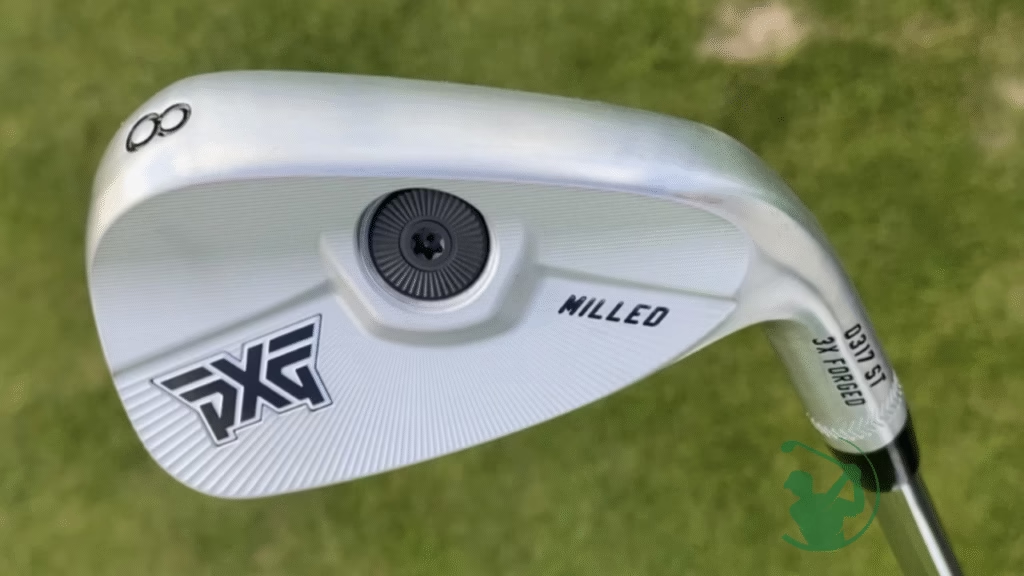
If you’re perfect enough to play blades made for the world’s top ball strikers — and I mean excellent — you probably already have a favorite brand and know exactly where you want to land in the muscle back category. But here’s the thing: if you step back, drop the heritage hype, and stop letting ego steer the ship, the PXG 0317 ST becomes a tough club to ignore.
PXG knows a thing or two about crafting premium irons. The 0317 STs carry on that tradition with clean, straight-line head shapes and a gorgeous satin finish that screams high-end. Our test pro loved the feedback and feel, and when I say he was striping it — I’m not exaggerating.
Now, let’s talk about speed and distance. Realistically, those shouldn’t be the main reason you buy blades. They’re not built to go crazy long. But the 0317 ST did stand out in our testing with above-average ball speeds and the second-longest carry distance of all the blades. Even more impressive? The shot dispersion area was 26% smaller than our test average. No, it’s not a forgiving blade — not by a long shot — but those numbers show PXG designed it to fly straighter than most musclebacks.
What seals the deal for me is PXG’s innovative central weighting system. You can tweak the setup — go lighter, heavier, longer, or shorter — without messing with the center of gravity. That means the feel stays consistent, and you can fine-tune your irons to fit your game like a glove. This flexibility is gold if you’re trying to build your ideal set in 2025.
Pros
- Gorgeous traditional blade profile
- The central weighting system keeps CG locked in place
- Long irons feature cavity backs — great for shot-makers
Cons
- Very little forgiveness — best suited for elite ball strikers only
4. Titleist 620 MB Irons: Shot-Shaping Control
A Shot-Maker’s Dream: Workability, Control, and That Signature Titleist Feel
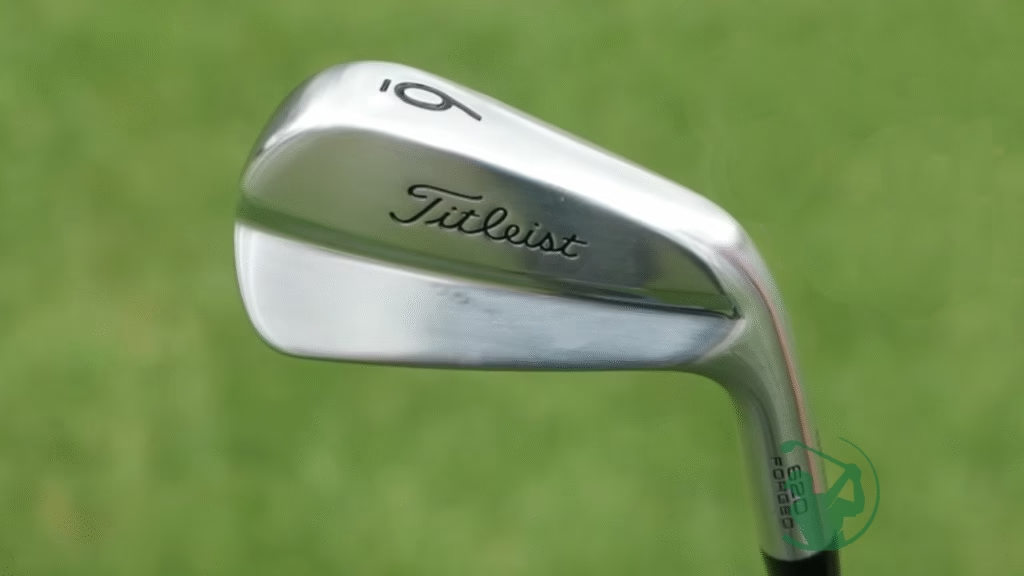
If you love shaping shots — drawing it right or fading it left — the Titleist 620MB is your go-to blade.
This is Titleist’s true players’ iron: a classic muscle back forged from a single piece of metal with clean lines, a timeless profile, and an ultra-responsive feel. It’s built for total control. The center of gravity is meticulously placed to allow elite players to fly the ball precisely, bend it both ways and get creative with shot-making.
When we tested it, we were seriously impressed by the feel. Every strike had a warm, buttery softness, and the penetrating ball flight was a real standout — especially on pure hits. That said, this isn’t a club for the faint of heart. The thin sole and tour-inspired shape make forgiveness minimal. You’ve got to bring the ball-striking chops to get the most out of it.
But if you’ve got the game, the 620MB will reward you with some of the best feedback and control Titleist offers.
Pros
- Stunning to look at
- Elite feel and unmatched shot-shaping control
Cons
- Not forgiving — for confident ball strikers, only
5. Wilson Staff Model Blade Iron: Forged Blade Irons
A Blade That Stays True to Tradition — With Just a Touch of Modern Feel
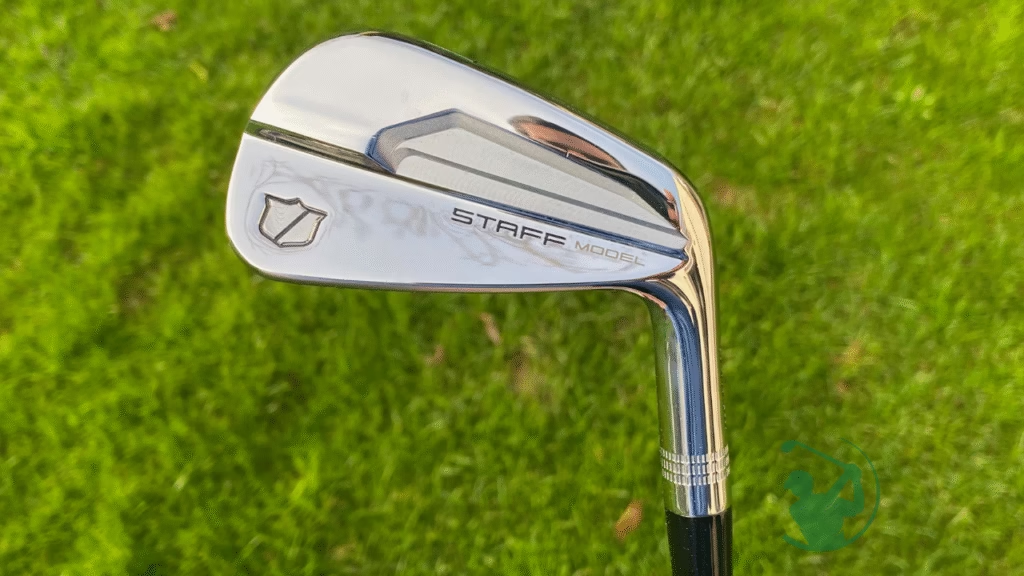
If you’re looking at blade irons in 2024, the Wilson Staff Model Blade deserves a serious look — especially if you’re a fan of clean lines, chrome polish, and old-school feedback.
I spent a whole hour listening to the Wilson team discuss the feel engineering behind this 2024 update. They explained how they’ve added more toe weighting to help better players avoid that dreaded smothered left miss (for right-handers). While I respect the attention to detail, I’ll be honest—many golfers won’t be able to tell this new version apart from the previous one. That’s not a knock, though. It just highlights how tricky it is to modernize blades without upsetting purists.
Like its predecessor, the Staff Model Blade is a beautiful, classic-looking iron finished in a polished chrome that screams traditional craftsmanship. It looks more intimidating at the address than at the PXG 0317 ST, mainly because the topline and sole are razor-thin. But remember — Wilson’s Tour players were heavily involved in shaping this club. That’s a good thing for feel and precision, but it’s worth knowing this isn’t a confidence-boosting blade, even for those considering a combo set with Wilson’s new Staff Model CB in the longer irons.
Performance-wise? It stacks up surprisingly well. The ball speed isn’t the best, but it holds its own in launch and height. And with the second-best carry distance in our blade tests this year, it’s right up there. If your swing can handle blades, this is easily one of the top three musclebacks of 2024 in terms of raw performance.
Pros
- Sensational feel and impact feedback
- Excellent value for the quality
- Timeless, classic blade profile
Cons
- One of the least forgiving irons on the market
6. Takomo 301 MB Golf Irons: Forged Blade Irons
Seriously worth a look if you’re shopping for bang-for-the-buck blades.
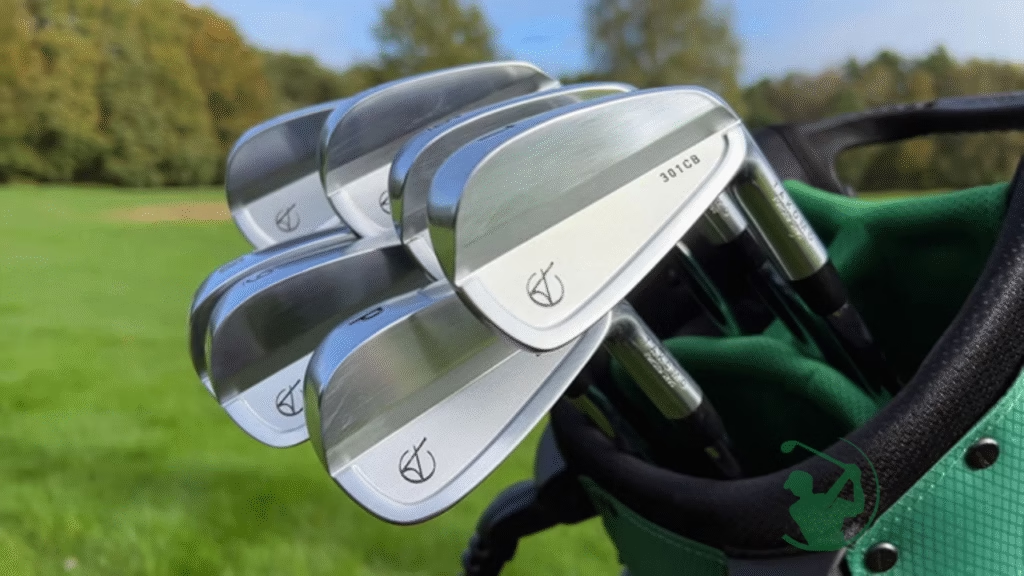
Takoma has upset the forged-iron apple cart in the last couple of years. So, whereas the Sub 70 was our value iron of choice before, more recently, our numbers-based test loyalty has switched to Takomo—so long as you’re willing to order online and forgive the ranker sound and looks.
As is par for the course for the rest of its relatives, the 301 mb is a perfect iron package. Planted in a golf bag, you’d be hard-pressed to find anyone to believe anything other than this is a set of high-end Japanese irons. Yet at £557, the model we tested will set you back less than half the price of most of the sets we tested.
It’s not the most potent muscle back blade on the market, as we established last year, but it did post impressive accuracy numbers once again (2nd best for carry distance drop-off and shot area). That’s not because the model has any give-in the eager-to-be-forgiving head; it’s just because our pro struck them well. If I were looking for a deal 2025 model shopping for blades, this would be the one I’d find online.
Pros
- Fantastic value for money.
- Wonderful looks.
- Very accurate.
Cons
- Custom fitting options are limited.
7. Mizuno Pro 241 Iron: Low Launch, High Control
A Pure Striker’s Dream Come True
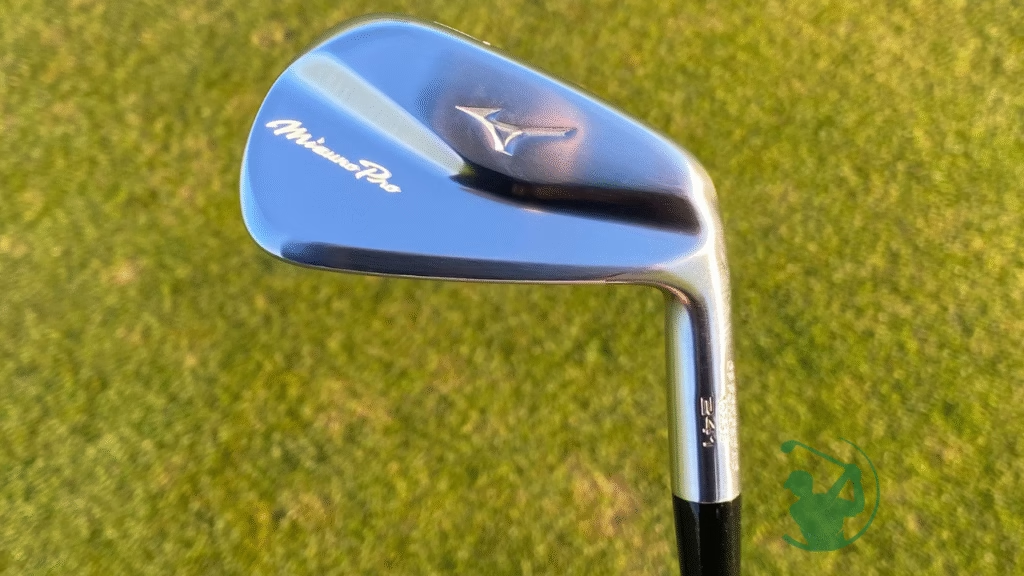
Quite frankly, this is one of the best-feeling irons in the world right now—full stop. For the purists among us, the Mizuno Pro 241 offers everything you’d want in a blade: precision, control, stunning aesthetics, and that unmistakable Mizuno forged feel.
Let’s start with what makes it so special. Thanks to Mizuno’s grain flow forging process, these irons look incredible and deliver a buttery-soft feel at impact as close to perfection as you’ll find in a muscle back. The newly sculpted head has just a touch more “pop” than older models, giving shots that extra oomph while rewarding clean, centered strikes. It’s pure joy when you catch one flush, and believe me, you’ll know when you do.
Mizuno’s gone full minimalist here—just a sleek “Mizuno Pro” script and clean surfaces throughout. It’s arguably the best-looking blade on the shelf right now. Little things, like not painting the “Mizuno” engraving, make it even more appealing. It’s easy on the eyes and seriously elegant.
This Pro 241 replaces the outgoing Pro 221, a tough act to follow. But Mizuno nailed it. The flight control is precise, the feedback is instant, and the turf interaction is smooth and intuitive. The 7-iron loft sits at a traditional 34°, so don’t expect rocket launcher distances. But if you’re a player who prioritizes feel, shape, and scoring precision, this is like driving a Rolls Royce on the fairway.
Sure, it’s not for everyone. Casual or higher handicap players may find the shaping behind the ball intimidating, and it’s not the most forgiving club in the lineup. But for low handicappers and elite-level strikers, the Mizuno Pro 241 is a work of art—crafted for control and pure ball-striking bliss.
Pros
- Incredibly soft, forged feel
- Extremely workable with tight flight windows
- Subtle, elegant design and minimal branding
Cons
- Not the most confidence-inspiring look behind the ball for some players
8. Callaway 2024 Apex MB Iron: Premium Forged Iron Set
Forged Precision with a Modern Edge
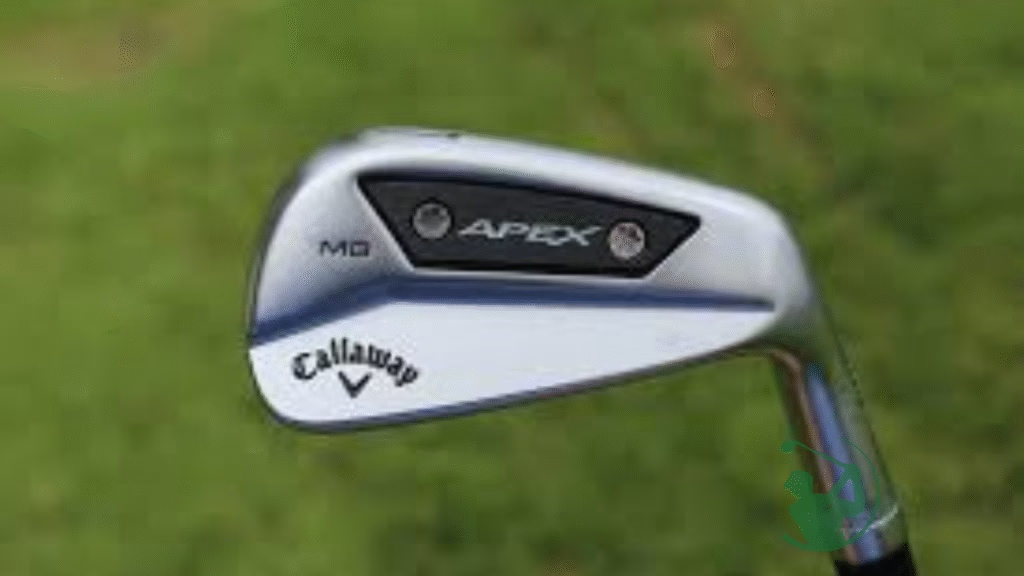
Callaway’s Apex line has always been about blending tradition with technology, and the new Apex MB 2024 irons continue that legacy in all the right ways. These blades are the soft-feeling counterpart in Callaway’s stellar forged iron lineup, explicitly built for elite players who crave pure precision and shot-shaping control.
From a design standpoint, the Apex MB offers a subtly different approach to the issue. Unlike some of the other forged muscle backs, you won’t see that smooth, flowing transition from hosel to topline—instead, Callaway opts for a more direct, structured design. While that might not appeal to every purist, it is visually striking and refreshingly different.
Performance-wise, these irons seriously deliver. One of the standout changes this year is the introduction of the “dual chamfer” leading edge—a design directly inspired by Tour feedback. This tweak makes a real difference in turf interaction, helping the iron cut through cleanly and promoting more consistent contact.
Of course, the Apex MB wouldn’t be a Callaway if it didn’t bring some subtle tech. While still unmistakably an actual blade, there’s just enough modern design thinking to give it a slight edge in feel and consistency compared to more traditional offerings. The forged construction ensures responsive feedback and incredible workability, so confident ball strikers can shape shots at will.
In short, the Callaway Apex MB 2024 is a tour-ready blade for players who want classic control and feel—with a hint of modern flair.
Pros
- New dual chamfer sole enhances turf interaction
- Feels more high-tech than most traditional blades
- Excellent feedback and shot-shaping control
Cons
- The hosel-to-topline shape may put off traditionalists.
9. Vega Mizar Pro Iron: Precision Milled Muscle Back
Japanese Precision with a Punchy Modern Twist
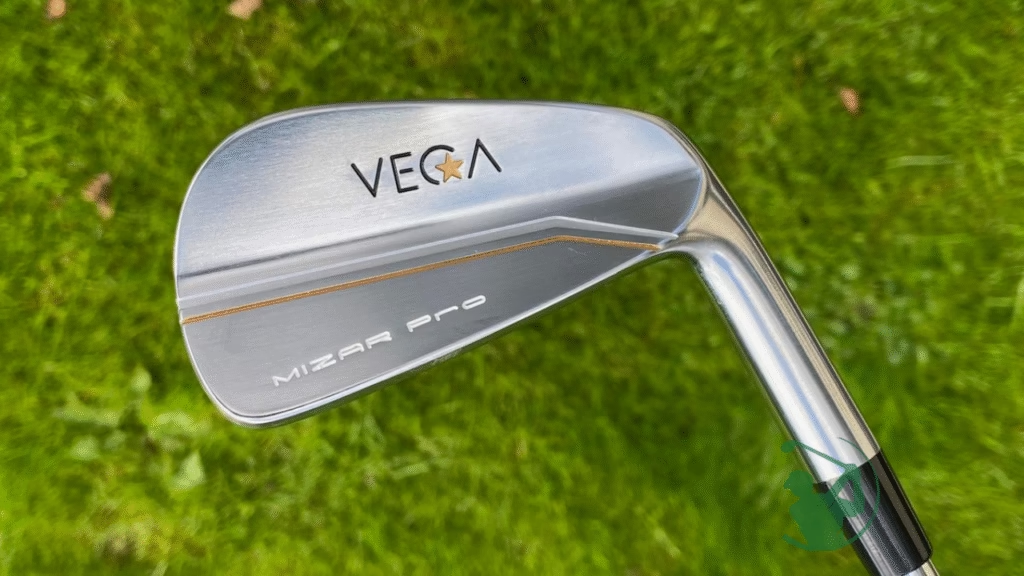
Looking for something a little different? Step into the world of Vega, where Japanese forging tradition meets modern golf design in the most elegant way possible. While not always front and center in the mainstream market, Vega has quietly built a strong reputation among elite club makers for meticulous craftsmanship and pinpoint precision—and the Mizar Pro irons are a shining example of that legacy.
Visually, these irons are jaw-droppingly gorgeous. There’s just a touch more blade length than your typical muscle back, which subtly adds confidence at the address. The top line, however, remains wafer-thin—a reminder that you’re swinging a true player’s iron designed for feel and control. The club is whispering, “Go ahead—smash it.”
But looks alone don’t make a great iron. Of course, the Mizar Pro impressed us even more. Despite its classic blade aesthetic, there’s real performance under the hood. A big part of that comes from the stronger lofts—about 3 degrees stronger than a Titleist 620 MB throughout the set—which help maximize distance without sacrificing feel.
What surprised us most was how buttery soft the strike felt—like slicing warm butter with a hot knife. Add to that a powerful flight, reliable distance, and the unmistakable satisfaction of nailing the sweet spot, and you’ve got an iron that punches well above its weight in performance.
Granted, this is a premium offering, and while not inexpensive, the price is very fair, given the level of craftsmanship on display. If your budget allows, you won’t regret adding these to your bag.
Pros
- Stunning, premium aesthetics
- Buttery soft forged feel
- Impressive distance for a bladed iron
Cons
- Strong lofts may turn off purists
Dirt collects easily in the rear weight port
How Do We Test Golf Irons?
Our equipment editor, Simon Daddow, walks you through how we test the best golf irons of the year—a process that blends expert opinions with thorough, hands-on methods from the Golf Irons Review test team.
Before testing begins, we often attend product launches or meet directly with a brand’s research and development team to learn about their newest technologies. This gives us insight into the design goals behind each iron.
We test every set indoors and outdoors to give you the most complete, real-world performance data. We use a launch monitor in a controlled simulator setting to collect precise data on spin rates, clubhead speed, launch angles, and more.
Then, it’s time to head outside. We take the irons to the course to see how they perform in real conditions across different rounds and course types. That way, we understand how they hold up when the environment changes—because, as you know, no two rounds are ever the same.
We take pride in our reviews with one clear mission: helping you make smarter buying decisions. That’s more important now than ever, with the rising golf costs and more people getting into the game.
Here’s the bottom line: Golf is expensive—but buying the right clubs can save you money in the long run.
And just so you know:
Our reviews are written by golfers, for golfers. At CNET, we rate and rank gear based solely on our experience.
No brand pays for a good review. No manufacturer can influence our scores.
We call it as we see it. Always.
Best Golf Blade Irons 2025: Buying Guide
If you’re still unsure which iron set suits you best, check out our Best Golf Irons guide for a complete comparison across all types—from game improvement to blades. But if you’re already drawn to the sleek and powerful muscle back, here’s what you must consider before deciding.
Feel
The feel is everything when it comes to shot-making. It helps you understand what happened at impact—through the sound, vibrations, and feedback from the shaft. Every blade has its unique feel, and choosing a model that gives you that crisp, responsive feedback is crucial. That’s how you learn to control your ball flight—ultimately, lower your scores.
Workability
Blades were built for you if you love shaping shots—drawing into tight pins or fading around trees. Better players crave this kind of workability. Think about your natural shot shape and which shots challenge you the most. Then, take a few blades to the range and test how each model responds to your swing. You’ll quickly find which ones give you the creative freedom you want.
Forgiveness
Let’s be real: blade irons aren’t known for forgiveness. If minimizing mishits is a priority, we suggest heading to our Best Mid-Handicap or High-Handicap Irons guides. Still, blade forgiveness has quietly improved in recent years. Models like the Ping Blueprint T and TaylorMade P7MB show that even tour-level designs can offer more help on off-center hits.
Looks
There’s no denying it—blades are the best-looking irons in golf. And while performance always matters more than appearance, feeling confident at address counts for a lot. If you look down and love what you see, you’ll swing more freely and strike the ball better.
Custom Fitting
Here’s the advice most golfers skip (but shouldn’t):
A proper custom fitting could benefit your game more than obsessing over which blade brand is “better.” Getting the right shaft, flex, lie angle, and other specs tailored to your swing makes a massive difference. If you’re unsure where to start, visit your local pro or golf retailer and test a few setups. You’ll be glad you did.
Budget
Blade iron prices can vary wildly, just like everything else in golf. What counts as value for money depends on your budget and preferences. The good news? You don’t need to spend a fortune on quality.
If you’re eyeing an upgrade in 2025 but want to save some cash, consider our picks from the 2023 best blade irons list. These slightly older models still deliver elite performance—and now come at discounted prices. They’re battle-tested, tour-proven, and won’t break the bank.
🏌️♂️ Frequently Asked Questions About the Best Blade Irons
Q. What are the best blade irons in golf?
Best blade irons, or “muscle back” irons, are a traditional golf club for skilled players. They feature a thin top line, compact head, and minimal offset, offering exceptional feel, control, and shot-shaping ability—but they’re less forgiving on mishits.
Q. Who should use the best blade irons?
Blade irons are best suited for low-handicap or scratch golfers who consistently strike the ball in the center of the clubface. If you prioritize precision and feedback over forgiveness, blades might be the right fit for your game.
Q. Are blade irons suitable for beginners?
Generally, no. Best blade irons are not recommended for beginners due to their small sweet spot and lack of forgiveness. Cavity back irons or game-improvement irons are better choices for new golfers needing more distance and accuracy help.
Q. Do any pros still use blade irons today?
Yes! Many professional golfers on the PGA Tour still use blade irons because of the control they offer. Players like Tiger Woods, Justin Rose, and Adam Scott often carry blades in their bags. However, even some pros opt for combo sets with forgiving long irons.
Q. What’s the difference between muscle back and blade irons?
“Muscle back” and “blade” are often used interchangeably. Technically, muscle backs have a thicker back section for slightly more forgiveness than classic blades. Still, both are considered traditional players’ irons.

